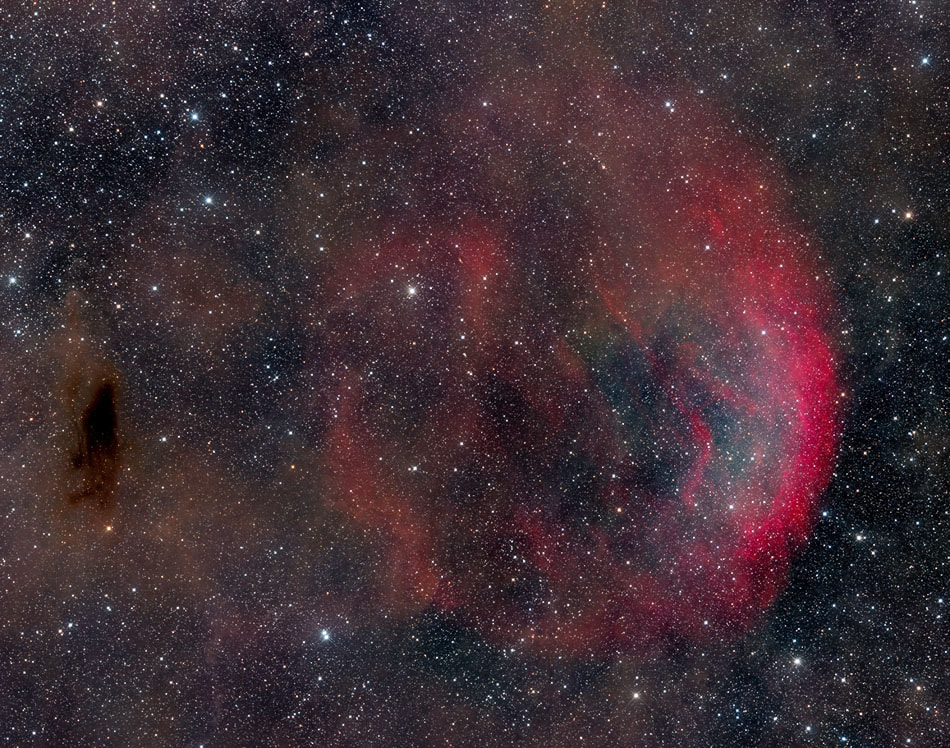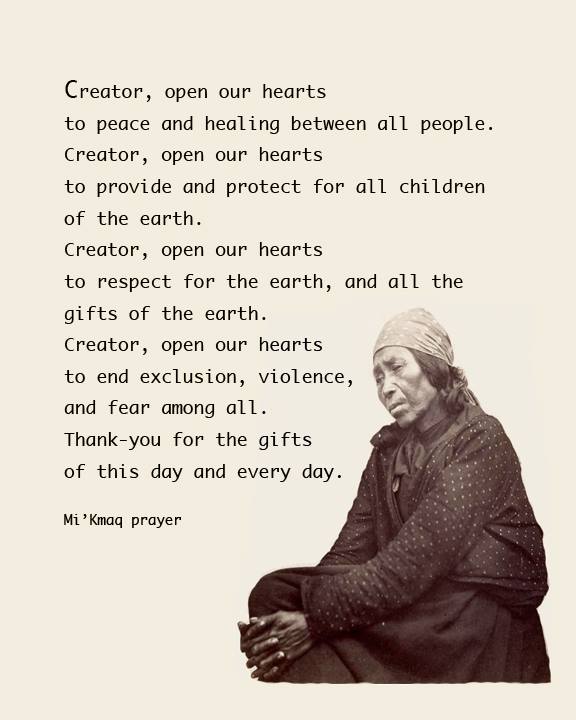Blog
Sh2-216 is a planetary nebula visible in the constellation of Perseus.
It is located in the easternmost part of the constellation, about 5° west of the bright Capella; it appears as a faint gaseous filament that is difficult to observe due to its weak luminosity. Its observation requires powerful and sensitive instruments and in long exposure photos it barely emerges from the background star field. Its declination is moderately northern, therefore its observation is considerably facilitated for observers located at northern latitudes; south of the equator, however, it can be easily observed only up to the lower temperate regions.
With a distance of just 129 parsecs (about 420 light years), it is the closest planetary nebula to the solar system; the great dispersion of its gases, which also makes it the largest planetary nebula observable in the celestial vault, is due to the great age of the cloud, estimated at around 600,000 years. It was initially catalogued as an H II region, although the star responsible for the ionisation of the gases had not been identified; later, through spectrometric studies, the hypothesis was advanced that the cloud could be the remains of a very ancient planetary nebula with an extremely reduced expansion velocity, a hypothesis later confirmed thanks to the discovery of the central star, a white dwarf catalogued as LSV+46°21, in an off-centre position in an eastward direction. The surface temperature of the white dwarf is between 50,000 and 90,000 kelvin

Celin Romero (born November 23, 1936, in Málaga) is a classical guitarist and member of the guitar quartet the Romeros. He is the eldest son of Celedonio Romero,who in 1957 left Spain for the United States with his family.
On February 11, 2000, at the USC Thornton School of Music, he and his brothers, Pepeand Angel, were each presented with the Grand Cross of Isabel la Catolica (the highest honour that can be offered in Spain), and were knighted for their musical accomplishments; the ceremony included a gala performance by The Romeros and the Thornton Chamber Orchestra.
In addition to his busy concert schedule, Romero is Professor of Music and Guitar at the University of California, San Diego.
more...Ludovico Maria Enrico Einaudi OMRI (born 23 November 1955) is an Italian pianist and composer. Trained at the Conservatorio Verdiin Milan, Einaudi began his career as a classical composer, later incorporating other styles and genres such as pop, rock, folk, and world music.
Einaudi has composed the scores for a number of films and television productions, including This Is England, The Intouchables, I’m Still Here, the TV miniseries Doctor Zhivago, and Acquario (1996), for which he won the Grolla d’oro. His music was used as the score for the Golden Globe and Academy Award-winning films Nomadland and The Father.
He has also released a number of solo albums for piano and other instruments, notably I Giorni in 2001, Nightbook in 2009, and In a Time Lapse in 2013. On 1 March 2019, Einaudi announced a seven-part project named Seven Days Walking, which was released over the course of seven months in 2019.
In 2005, he was appointed an Officer of the Order of Merit of the Italian Republic.
more...R. L. Burnside (November 23, 1926 – September 1, 2005 Harmontown, MS) was an American bluessinger, songwriter and guitarist. He played music for much of his life but received little recognition before the early 1990s. In the latter half of that decade, Burnside recorded and toured with Jon Spencer, garnering crossover appeal and introducing his music to a new fan base in the punk and garage rock scenes. e played the harmonica and dabbled with playing guitar, beginning at the age of 16. He said he first played in public at age 21 or 22. He learned mostly from Mississippi Fred McDowell, who had lived near Burnside since Burnside was a child. He first heard McDowell playing at age 7 or 8 and eventually joined his gigs to play a late set. Other local teachers were his wife’s brother, his uncle-in-law Ranie Burnette, who was a popular player from Senatobia, the mostly unknown Henry Harden, Son Hibbler, Jesse Vortis, and possibly Stonewall Mays. Burnside cited church singing and fife-and-drum picnics as elements of his childhood’s musical landscape, and he credited Muddy Waters, Lightnin’ Hopkins, and John Lee Hooker as influences in adulthood.
more...Ray Drummond (born November 23, 1946, in Brookline, Massachusetts) is an American jazzbassist and teacher. He also has an MBA from Stanford University, hence his linkage to the Stanford Jazz Workshop. He can be heard on hundreds of albums and co-leads The Drummondswith Renee Rosnes and (not related) Billy Drummond.
Drummond has been a resident of Teaneck, New Jersey, since 1980 with his wife, Susan, and his daughter, Maya.
He is the elder brother of David Drummond, who served as senior vice president, corporate development and chief legal officer of Google Inc., until his retirement in 2020.
more...Perry Miller (born November 22, 1941), known professionally as Jesse Colin Young, is an American singer and songwriter. He was a founding member and lead singer of the 1960s group the Youngbloods. After their dissolution in 1972, Young embarked on a solo career, releasing a series of albums through Warner Bros. Records, including Song for Juli (1973), Light Shine (1974), Songbird (1975) and the live album On the Road (1976). Young continued to release music in the 1980s with Elektra Records and Cypress Records, before deciding to release music through his personal label, Ridgetop Music, in 1993. After the Mount Vision Fire in 1995, Young relocated with his family to a coffee plantation in Hawaii, periodically releasing music. Young received a diagnosis of “chronic Lyme disease” in 2012, and decided to retire from music. He began performing again in 2016 with his son Tristan, releasing a new album Dreamers in 2019 through BMG.
Young’s song “Sunlight” was covered by Three Dog Night on their album Naturally(1970), and “Darkness, Darkness” by Robert Plant in 2002, which received a nomination for the Grammy Award for Best Male Rock Vocal Performance.
more...
Shabbat for the Soul service at Mt Zion Friday November 22 2024 630pm: with the Installation of Rabbi Renetzky. Music with Jennifer Strauss-Klein, Tami Morse, mick laBriola and more.
more...Braided and serpentine filaments of glowing gas suggest this nebula’s popular name, The Medusa Nebula. Also known as Abell 21, this Medusa is an old planetary nebula some 1,500 light-years away in the constellation Gemini. Like its mythological namesake, the nebula is associated with a dramatic transformation. The planetary nebula phase represents a final stage in the evolution of low mass stars like the sun as they transform themselves from red giants to hot white dwarf stars and in the process shrug off their outer layers. Ultraviolet radiation from the hot star powers the nebular glow. The Medusa’s transforming star is the faint one near the center of the overall bright crescent shape. In this deep telescopic view, fainter filaments clearly extend below and to the left. The Medusa Nebula is estimated to be over 4 light-years across.

Aston Francis Barrett, CD (22 November 1946 – 3 February 2024), often called “Family Man” or “Fams” for short, was a Jamaican musician and Rastafarian. He was best known as the bandleader of Bob Marley‘s backing band, as well as co-producer of the albums, and the man in charge of the overall song arrangements. In 2006 Barrett filed a lawsuit against Island Records, the Wailers’ label, seeking £60 million in unpaid royalties allegedly due him and his now deceased brother. The lawsuit was dismissed. The arguments by Island-Universal and the Marley family was that Barrett surrendered his rights to any further royalties in a 1994 settlement in exchange for several hundred thousand dollars. The judge agreed. As a result he faced about £2 million in legal costs for the trial, forcing him to sell two homes in Jamaica. Bass Player magazine has commented that “Perhaps no music evokes the notion of bass and bass tone like reggae and dub, and no two words are more synonymous with those plucking practices than Family Man.” Ali Campbell, frontman of UB40, credits Aston Barrett and his brother as the inventors of reggae as we know it, stating, “That all happened before reggae, which kind of happened in about ’69, you know, when reggae as we know it was invented by the Barrett brothers, I’d say.” Rock musician John Lennon expressed admiration for the unique bass sound originating from Jamaica, while discussing his plans for a comeback album in early 1980 while listening to the Bob Marley & The Wailers album Burnin’, stating, “You couldn’t get that sound in New York. No way!
more...Max Romeo (born Maxwell Livingston Smith; 22 November 1944) is a Jamaicanreggae and roots reggae recording musician who has achieved chart success in his home country and in the United Kingdom. He had several hits with the vocal group the Emotions. His song “Wet Dream” (1968) included overtly sexual lyrics and launched a new style of reggae.
Born in St. D’Acre, St. Ann, Jamaica, Romeo left home at the age of 14 and worked on a sugar plantation outside Clarendon, before winning a local talent competition when he was 18. This prompted a move to the capital, Kingston, in order to embark on a musical career.
more...James Minter Knepper (November 22, 1927 – June 14, 2003 LA,CA) was an American jazztrombonist. In addition to his own recordings as leader, Knepper performed and recorded with Charlie Barnet, Woody Herman, Claude Thornhill, Stan Kenton, Benny Goodman, Gil Evans, Thad Jones and Mel Lewis, Toshiko Akiyoshi and Lew Tabackin, and, most famously, Charles Mingus in the late 1950s and early 1960s. Knepper died in 2003 of complications of Parkinson’s disease.
more...Edward Benjamin Britten, Baron Britten OM CH (22 November 1913 – 4 December 1976) was an English composer, conductor, and pianist. He was a central figure of 20th-century British music, with a range of works including opera, other vocal music, orchestral and chamber pieces. His best-known works include the opera Peter Grimes (1945), the War Requiem (1962) and the orchestral showpiece The Young Person’s Guide to the Orchestra (1945).
Britten was born in Lowestoft, Suffolk, the son of a dentist. He showed talent from an early age. He studied at the Royal College of Music in London and privately with the composer Frank Bridge. Britten first came to public attention with the a cappella choral work A Boy Was Born in 1934. With the premiere of Peter Grimes in 1945, he leapt to international fame. Over the next 28 years, he wrote 14 more operas, establishing himself as one of the leading 20th-century composers in the genre. In addition to large-scale operas for Sadler’s Wells and Covent Garden, he wrote chamber operas for small forces, suitable for performance in venues of modest size. Among the best known of these is The Turn of the Screw (1954). Recurring themes in his operas include the struggle of an outsider against a hostile society and the corruption of innocence.
Britten’s other works range from orchestral to choral, solo vocal, chamber and instrumental as well as film music. He took a great interest in writing music for children and amateur performers, including the opera Noye’s Fludde, a Missa Brevis, and the song collection Friday Afternoons. He often composed with particular performers in mind. His most frequent and important muse was his personal and professional partner, the tenor Peter Pears; others included Kathleen Ferrier, Jennifer Vyvyan, Janet Baker, Dennis Brain, Julian Bream, Dietrich Fischer-Dieskau, Osian Ellis and Mstislav Rostropovich. Britten was a celebrated pianist and conductor, performing many of his own works in concert and on record. He also performed and recorded works by others, such as Bach‘s Brandenburg Concertos, Mozart symphonies, and song cycles by Schubert and Schumann.
Together with Pears and the librettist and producer Eric Crozier, Britten founded the annual Aldeburgh Festival in 1948, and he was responsible for the creation of Snape Maltings concert hall in 1967. In 1976, he was the first composer to be given a life peerage. He died shortly afterwards, aged 63.
more...Hoagland Howard Carmichael (November 22, 1899 – December 27, 1981 Bloomington, IN) was an American musician, composer, songwriter, actor, and lawyer. Carmichael was one of the most successful Tin Pan Alley songwriters of the 1930s, and was among the first singer-songwriters in the age of mass media to utilize new communication technologies such as television, microphones, and sound recordings.
Carmichael composed several hundred songs, including 50 that achieved hit record status. He is best known for composing four of the most-recorded American songs of all time: “Stardust” (lyrics by Mitchell Parish), “Georgia on My Mind” (lyrics by Stuart Gorrell), “The Nearness of You” (lyrics by Ned Washington), and “Heart and Soul” (lyrics by Frank Loesser). He also collaborated with lyricist Johnny Mercer on “Lazybones” and “Skylark.” Carmichael’s “Ole Buttermilk Sky” was an Academy Award nominee in 1946, from Canyon Passage, in which he co-starred as a musician riding a mule. “In the Cool, Cool, Cool of the Evening,” with lyrics by Mercer, won the Academy Award for Best Original Song in 1951. Carmichael also appeared as a character actor and musical performer in 14 films, hosted three musical-variety radio programs, performed on television, and wrote two autobiographies.
more...Alphonse Lee Mouzon (November 21, 1948 – December 25, 2016) was an American musician and vocalist, most prominently known as a jazz fusion drummer.He was also a composer, arranger, producer, and actor. Mouzon gained popularity in the late 1960s and early 1970s. He was the owner of Tenacious Records, a label that primarily released Mouzon’s recordings.
Mouzon, of African, French, and Blackfoot descent, was born on November 21, 1948, in Charleston, South Carolina. He received his first musical training at Bonds-Wilson High School, and moved to New York City upon graduation. He studied drama and music at the City College of New York, as well as medicine at Manhattan Medical School. He continued receiving drum lessons from Bobby Thomas, the drummer for jazz pianist Billy Taylor. He played percussion in the 1968 Broadway show Promises, Promises, and he then worked with pianist McCoy Tyner. He spent a year as a member of the jazz fusion band, Weather Report. After that Mouzon signed as a solo artist to the Blue Note label in 1972. On September 7, 2016, Mouzon was diagnosed with neuroendocrine carcinoma, a rare form of cancer.[1] His son, Jean-Pierre Mouzon, reported his father had died of cardiac arrest at his home in Granada Hills, Los Angeles, California, on December 25, 2016, at the age of 68.
more...More Posts
- Daily Roots Dennis Matumbi
- Patty Lacy
- Cosmos Tau Herculids
- Mikey Dread
- Paquito D’Rivera
- Anthony Braxton
- Oliver Nelson
- STAND WITH UKRAINE The Hardness
- Daily Roots Merger
- Cosmos Milky Way
- Curtis Mayfield
- Grachan Moncur III
- Eddie Willis
- Jimmy Rogers
- Josephine Baker
- Flamenco Fridays con Nano de Jerez, José Mercé y Aurora Vargas
- Daily Roots The Officials
- Cosmos NGC 1097
- Charlie Watts
- Valaida Snow

